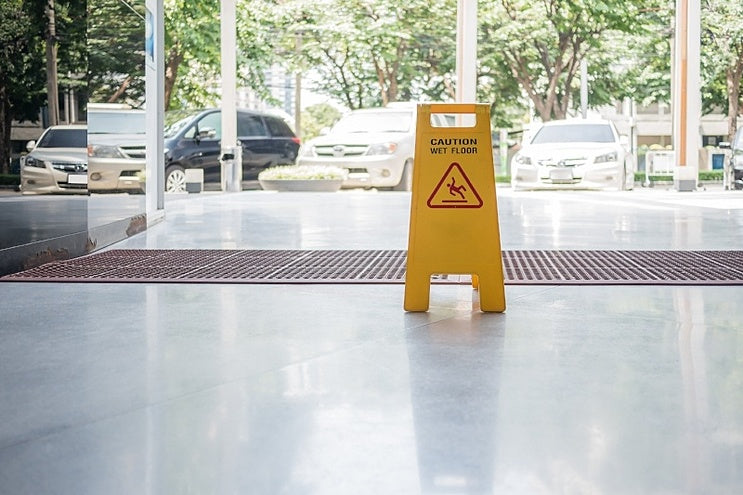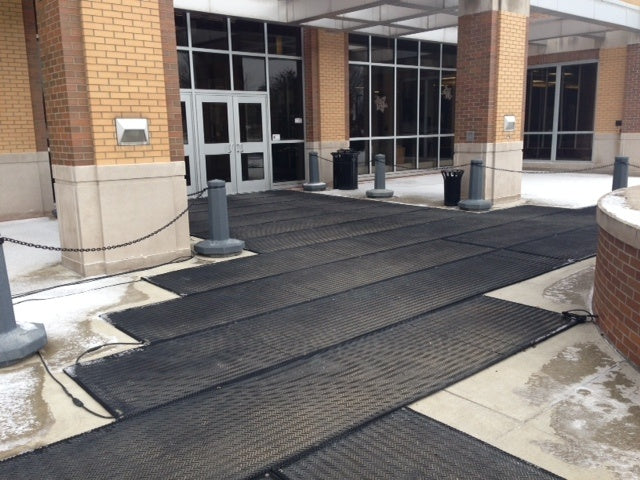
It’s no secret that slips and falls can be costly to businesses and institutions. They lead to employees taking sick days and result in worker compensation claims, higher insurance premiums, and lawsuits, all of which can seriously harm your bottom line.
The Statistics Speak for Themselves:
- Slips and falls are the main cause of missed work days.
- As many as 85% of worker’s compensation claims result from a slipping incident.
- Roughly $70 billion is spent annually to cover medical expenses and compensation for employee slips and falls. (National Safety Council Injury Facts, 2003)
- In 22% of the incidents, the number of days missed exceeds 31. (US Bureau of Labor Statistics, 2002)
-
In 2013, the second most frequent cause of workplace injuries, same-level falls, cost $10.17 billion, and slips without falls cost $2.3 billion. (2016 Liberty Mutual Research Workplace Safety Index)
Preventing slips and falls should be a high priority for all businesses and institutions. Prevention has two aspects: developing an organizational culture that supports safe habits and ensuring that physical conditions are optimal.
Preventing Slips & Falls Tip #1: Develop a Safe Organizational Culture
To help prevent slips and falls, focus on developing a workplace culture with a strong emphasis on safety:
- Investigate how and why slips and falls occur in your institution.
- Institute safety awareness programs and safety training for employees.
- Encourage employees to speak up if they encounter safety problems and create a system for employee incident reporting.
- Create safety committees and personal protective equipment programs.
- Make a focus on workplace safety part of every employee’s daily routine.
-
Have a personalized message from the safety director or facility director in the form of a video greeting reminding people to stay alert and report issues that need to be attended to.
Preventing Slips & Falls Tip #2: Optimize Physical Conditions
Physical factors also have a significant impact on the risk of falling in a given space. The following is only a partial list:
- Floors that are wet or covered with a slippery surface, such as grease, floor wax, or powder
- Uneven surfaces, such as poorly paved sidewalks
- Holes in the ground, such as potholes
- Snow, hail, sleet, or rain
- Loose tiles or carpets
- Obstacles such as electrical cords or clutter
- Poor lighting
- Wet shoes or high-heeled shoes
These methods will help you to focus on physical factors to prevent slips and falls in your institution:
- Keep your facility neat, orderly, and well maintained.
- Make sure that all areas of the facility have appropriate lighting: parking lots, walkways, work areas, stairways, hallways, basements.
- Repair tiles or carpeting that become loose.
- Check for obstacles in hallways, stairwells, and work areas.
- Keep sidewalks and parking lot surfaces in good condition, even and without holes.
- Make housekeeping tasks part of a daily routine and conduct safety inspections periodically.
- Make sure that outside contractors are informed of your facility’s safety rules and regulations and comply with them.
- Make sure floors being cleaned are clearly marked as wet.
- Dry floors that become wet from spills or because of rain or snow tracked in from outside.
- Use mats with backing material in entrances.
-
Remove snow and ice from outdoor areas.
Emphasize the importance of appropriate footwear for employees.
- The type of soles and heels on shoes affect slipping and falling risk.
- Slip-resistant shoes can significantly reduce the number of slips and falls.
- Loose shoelaces increase the risk of tripping or falling.
By instituting an organizational culture that promotes safety and focusing on improvements in physical conditions, you should be able to reduce falls, save money, and keep your employees healthy.


